Of course LinkedIn, Google+, Facebook and other platforms provide journalists with an online presence, and it is always worth paying attention to your bio information available on social networks as other people will search for you.
But for those who want to go a step further, here are five portfolio and profile platforms for journalists (listed in no particular order):
1. Cuttings.me
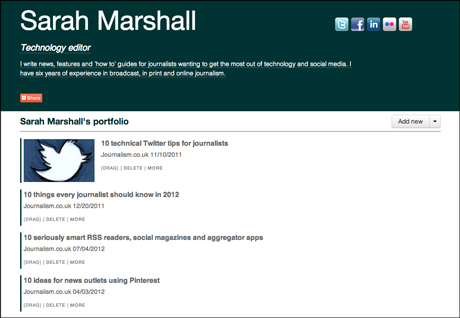
Cuttings.me was built by a freelance journalist for freelance journalists. It was created by Nicholas Holmes and launched exactly a year ago. At the time Holmes told Journalism.co.uk that he built it as he "was always having to send different URL's in emails".
"It all got a bit messy when I was trying to remember the best bits that I had done and found I had the need for a single place to put all of this stuff and wanted the ability to direct people to that single page."
Cuttings.me allows you to add a bio, links to your Twitter, LinkedIn and other accounts, and customise the design of your online portfolio.
You can then either upload a PDF of a story in print, or add a URL and image to link to an article online, and display the list of stories in any order.
Clicking on the "more" button below a link to an online story gives the number of social shares, which can be useful for journalists and to those viewing your profile.

An RSS function allows anybody to subscribe to a feed of your work, which is also away of adding the feed to your LinkedIn profile.
2. Contently
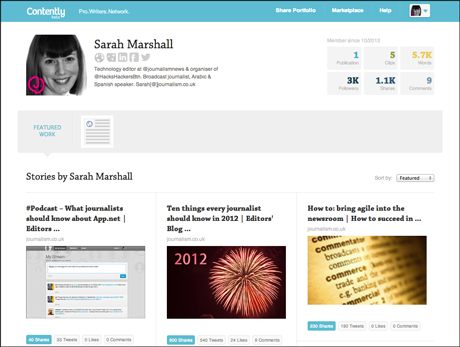
Contently is a portfolio platform that lets you link to your online articles, but rather than manually adding URLs as with Cuttings.me, you simply add the details of the titles you work for and Contently automatically finds articles which you can choose to add or omit.
As with the other portfolio platforms, you can add a bio and link your social media accounts.
3. Journalisted
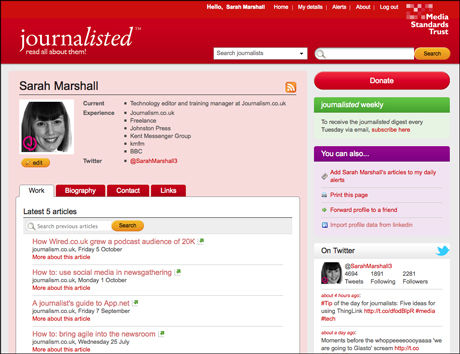
Journalisted was set up by the Media Standards Trust to provide the public with a way of finding out what journalists are writing about, and provide the facility for comparing a journalist’s articles with those of other reporters writing about similar subjects.
You can sign up by manually adding a bio or importing details from LinkedIn. You can then add links to articles.
Journalisted is searchable, while some others are not, and others may search for your name to find your profile. People can also follow your work by subscribing to a feed of your articles.
4. Muck Rack
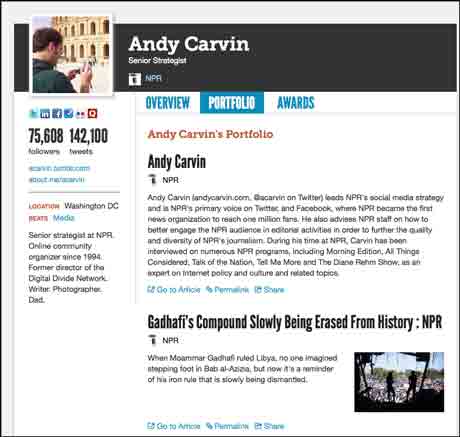
Although not built as a portfolio platform but as a way of tracking journalists' conversations on Twitter, Muck Rack has recently added portfolio functionality.
Journalists can now add a bio and links to their work, as NPR's social media strategist Andy Carvin has done here.
Muck Rack also allows you to list areas that you do not cover. For example, technology journalist Erin Griffith makes the most of this option, and includes subjects she reported on in a previous role and a line saying she does not report on "news our competitors have already covered".
Another of Muck Rack's features allows journalists to respond to interview questions. You can see an example here.
5. About.me
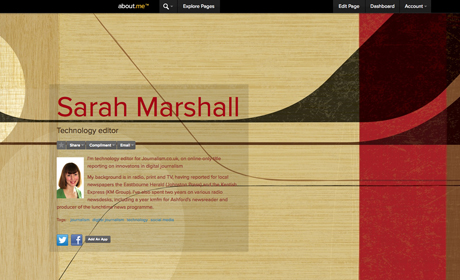
About.me is a popular platform used by professionals across different sectors. There is no facility to add links to your work but About.me does provide a space where journalists can present their profile by adding a bio and list skills.
Related: Here are five great journalist and portfolio websites
Have we missed a platform that is useful to journalists? List it in the comments section below.
Free daily newsletter
If you like our news and feature articles, you can sign up to receive our free daily (Mon-Fri) email newsletter (mobile friendly).









